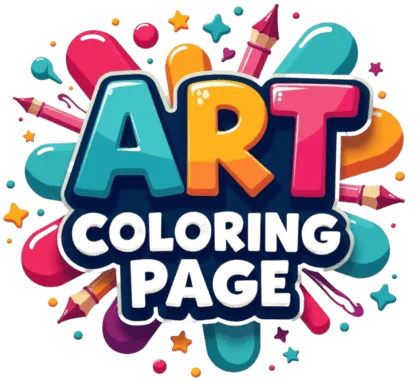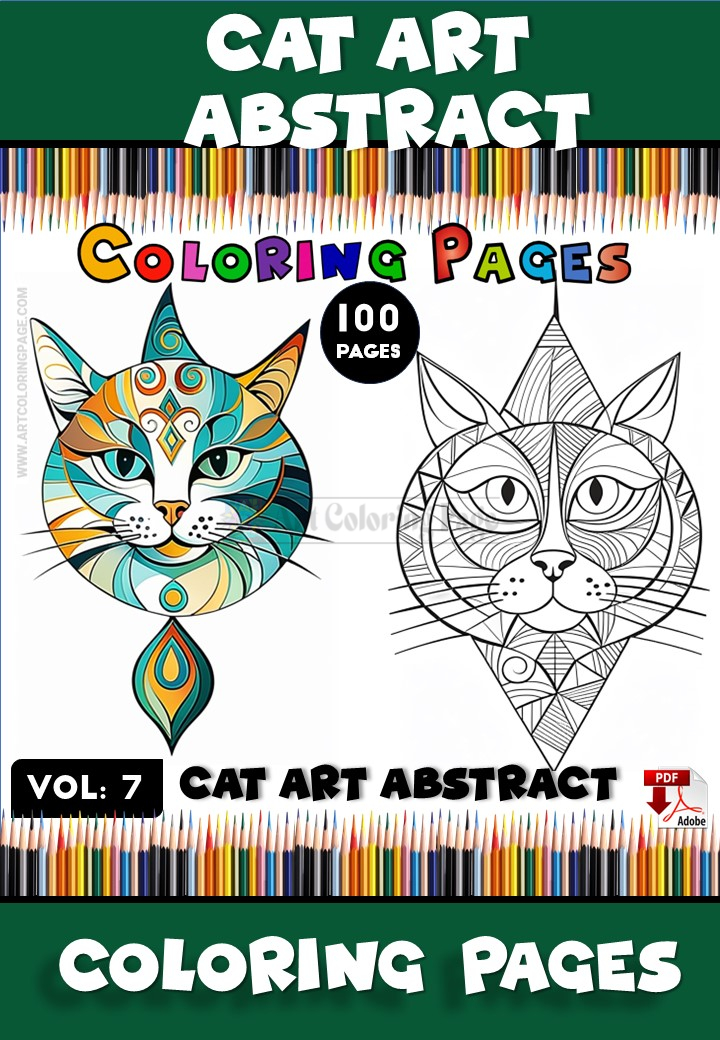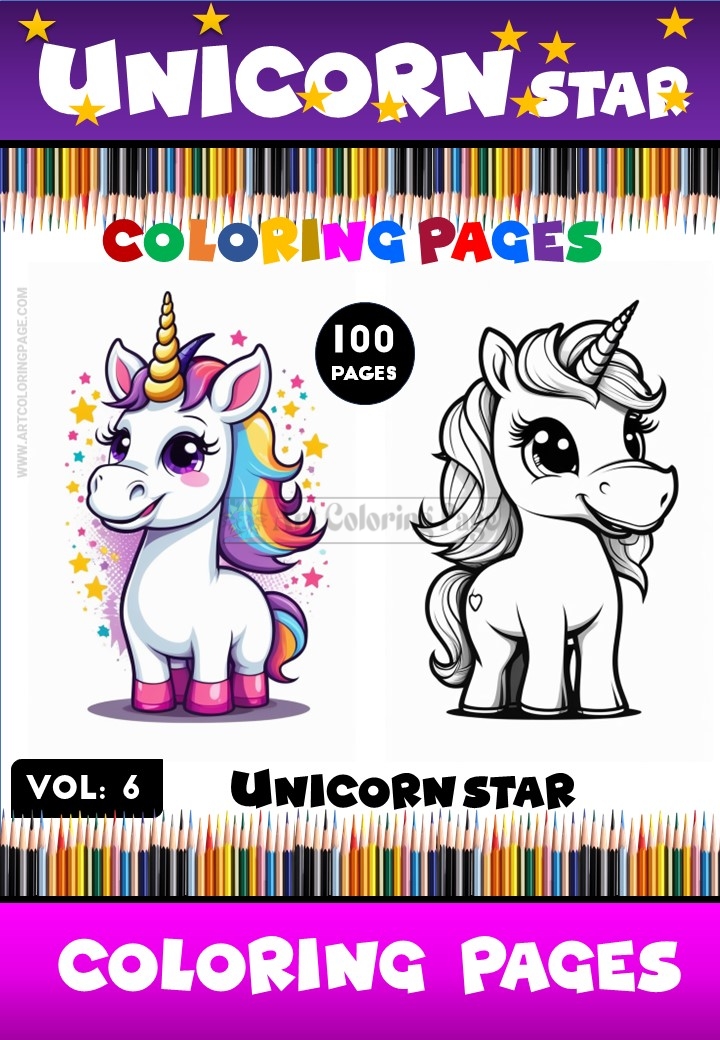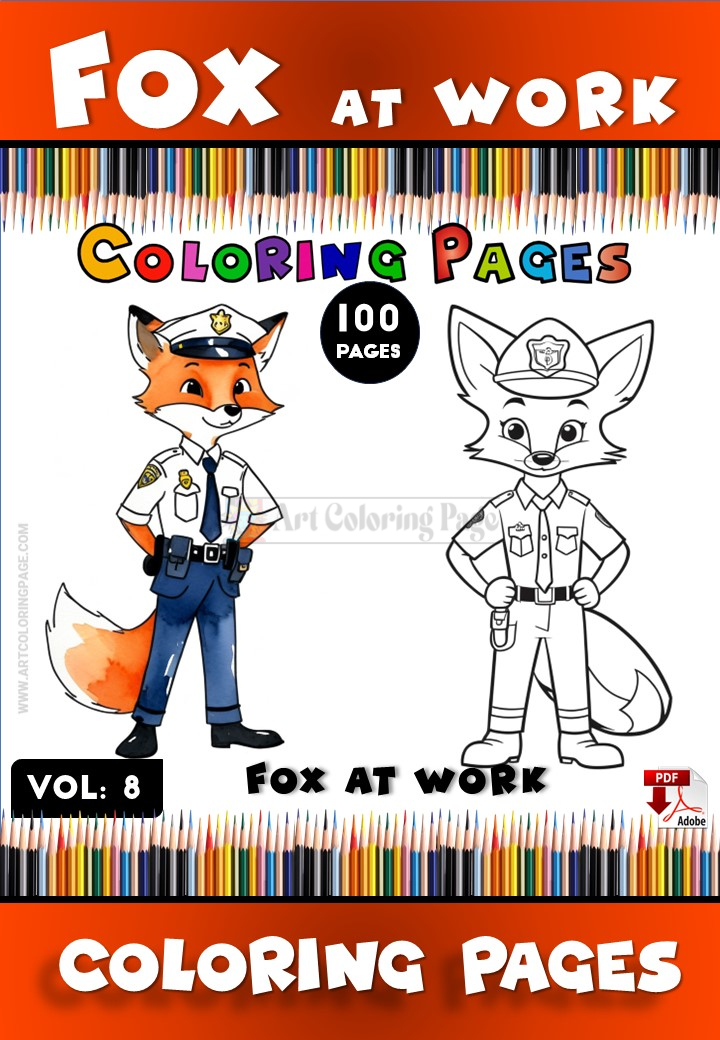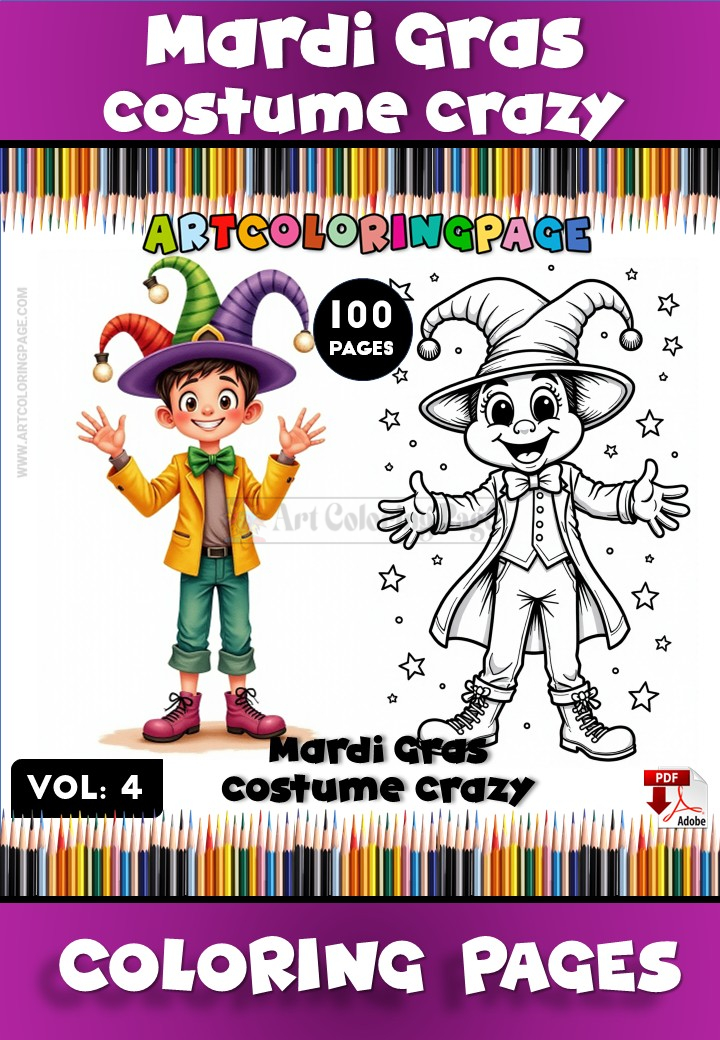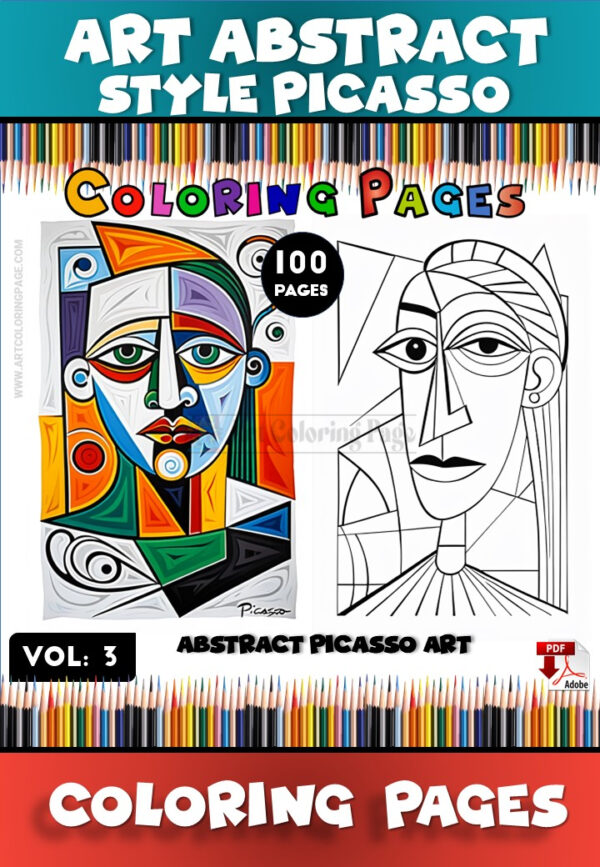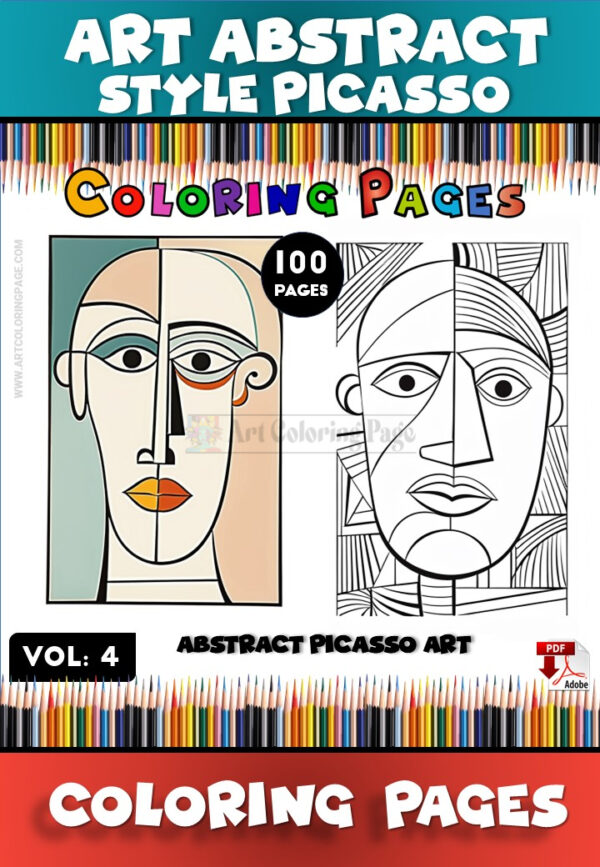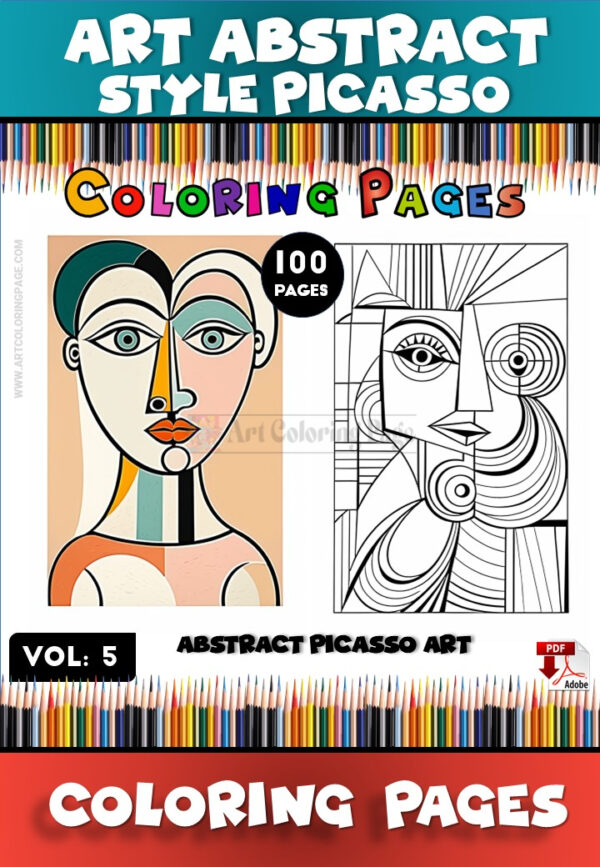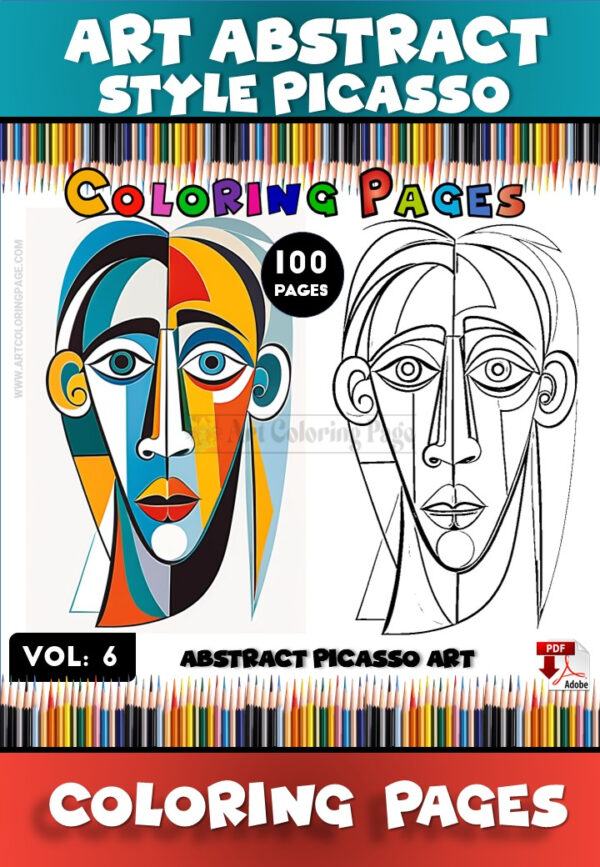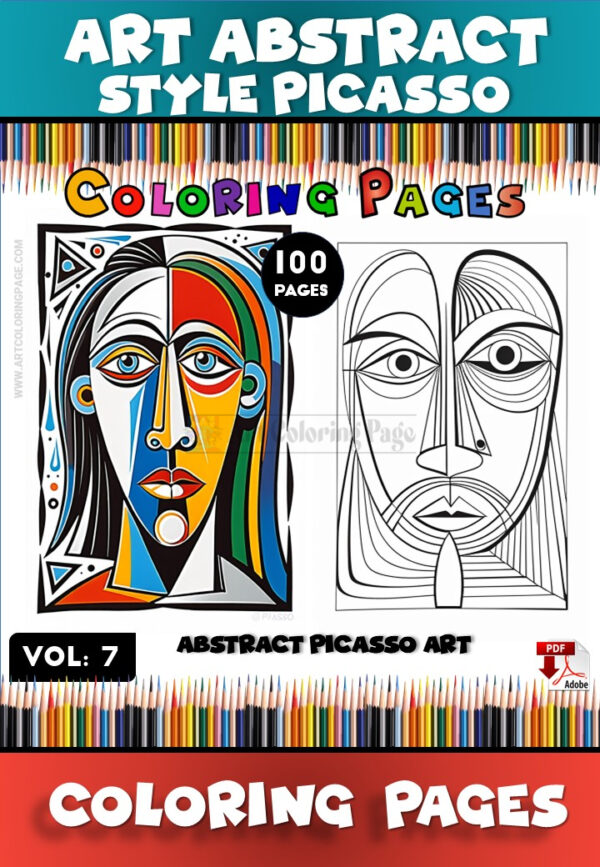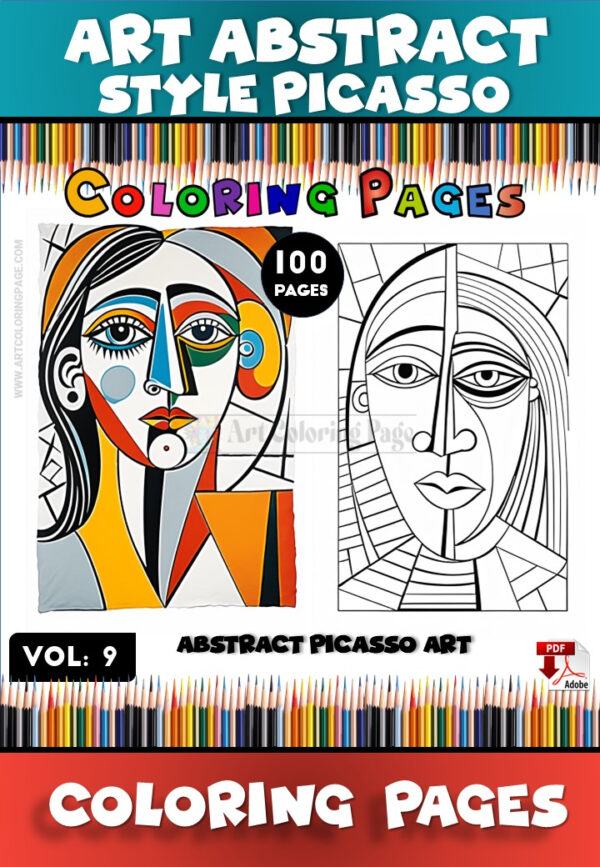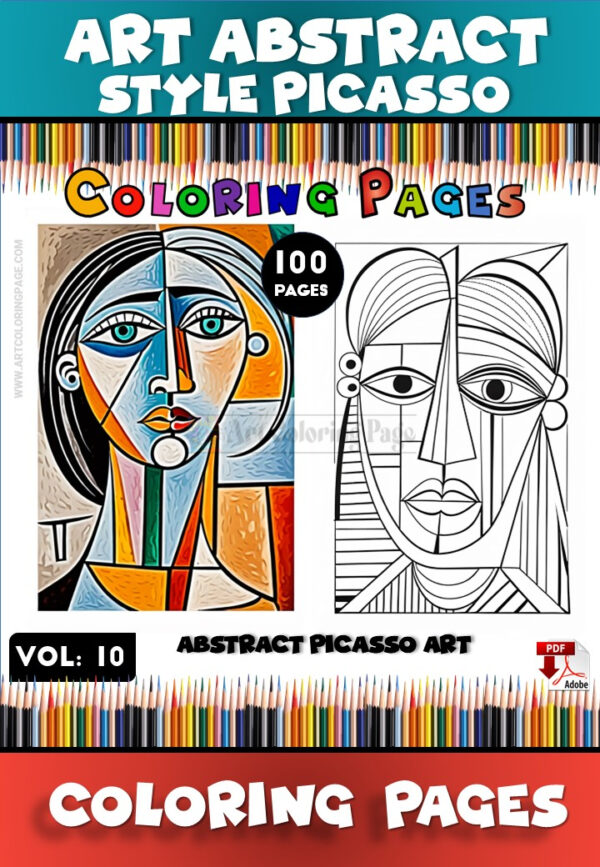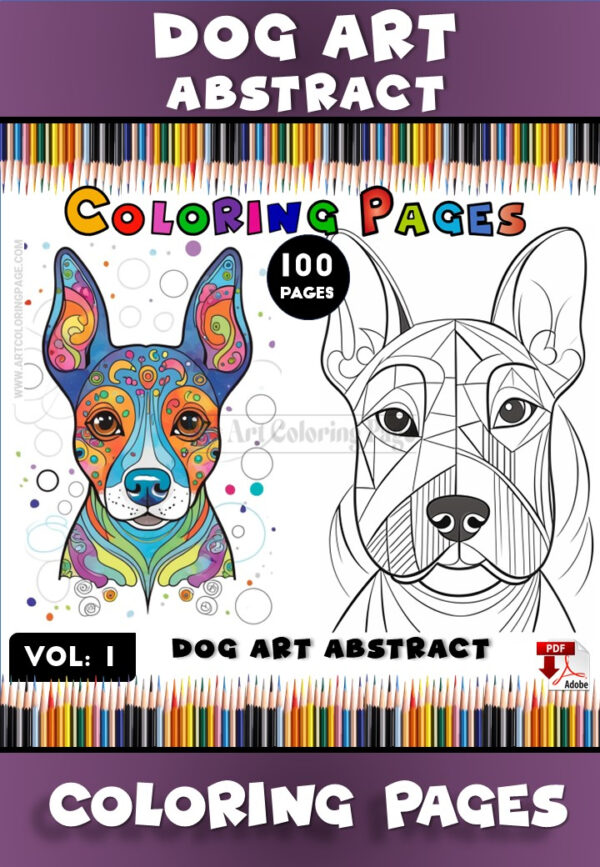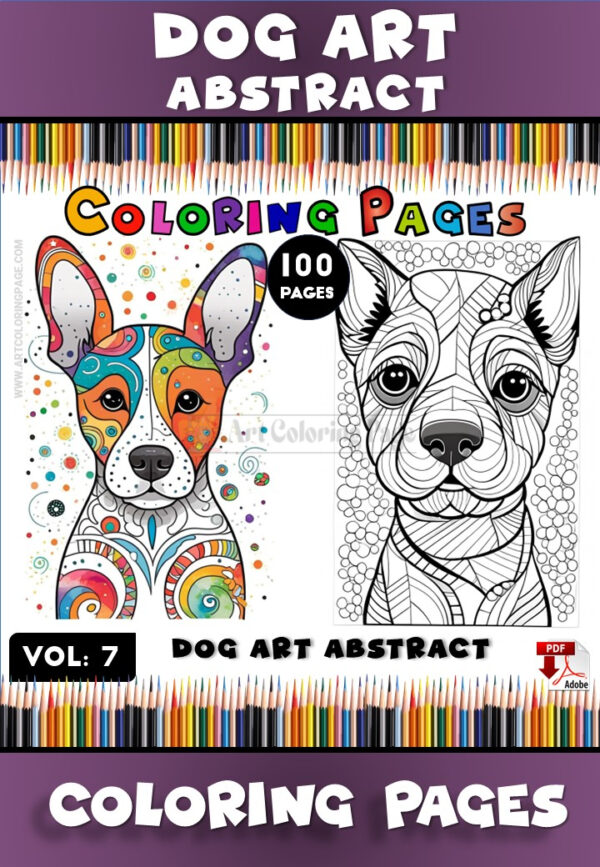Blogs coloring page
Unlock Creativity: The Ultimate Guide to Art Coloring Page
Remember the simple joy of coloring as a child? The satisfying glide of a crayon, the transformation of a black-and-white outline into a vibrant scene? While often associated with childhood, the act of coloring, particularly engaging with art coloring page, has evolved into a sophisticated and deeply rewarding activity for all ages. It’s a universe brimming with intricate designs, therapeutic benefits, and boundless opportunities for creative expression. Forget basic shapes and cartoon characters (though those have their place!); we’re diving into a realm where lines and spaces become canvases for personal interpretation, mindfulness, and artistic exploration.
Defining Art Coloring sheets : Beyond Simple Outlines
So, what exactly distinguishes “art coloring pages” from the coloring sheets you might remember from kindergarten? While the fundamental concept remains – adding color to pre-drawn outlines – art coloring sheets typically feature more complex, detailed, and aesthetically sophisticated designs. Think intricate mandalas, replicas of famous paintings, elaborate floral patterns, abstract compositions, and detailed fantasy landscapes. These aren’t just about staying within the lines; they are invitations to engage with art on a personal level. They often require more focus, finer motor control, and a greater consideration of color theory, shading, and blending, making them appealing to teenagers, adults, and seniors seeking a more engaging creative outlet. The emphasis shifts from mere activity to artistic interpretation and mindful practice. These pages serve as a bridge, connecting individuals who may not consider themselves “artists” with the fundamental joys and benefits of artistic creation.
Why Are Art Coloring Pages So Popular Today?
The resurgence and sustained popularity of art coloring sheets , especially among adults, isn’t accidental. In our fast-paced, digitally saturated world, there’s a growing yearning for tangible, mindful activities that offer a respite from screen time and daily stressors. Art coloring page perfectly fit this need. They provide a structured yet flexible creative outlet that requires minimal initial skill but offers immense satisfaction. The low barrier to entry – grab some pages and coloring tools – makes it accessible to almost everyone. Furthermore, the widely reported benefits, ranging from stress reduction and improved focus to enhanced creativity and fine motor skills, contribute significantly to their appeal. It’s a form of accessible therapy, a portable hobby, and a way to reconnect with one’s inner creativity without the pressure of a blank canvas. The sheer variety available ensures there’s a style or theme to captivate virtually any interest, from intricate patterns to beloved artistic masterpieces.
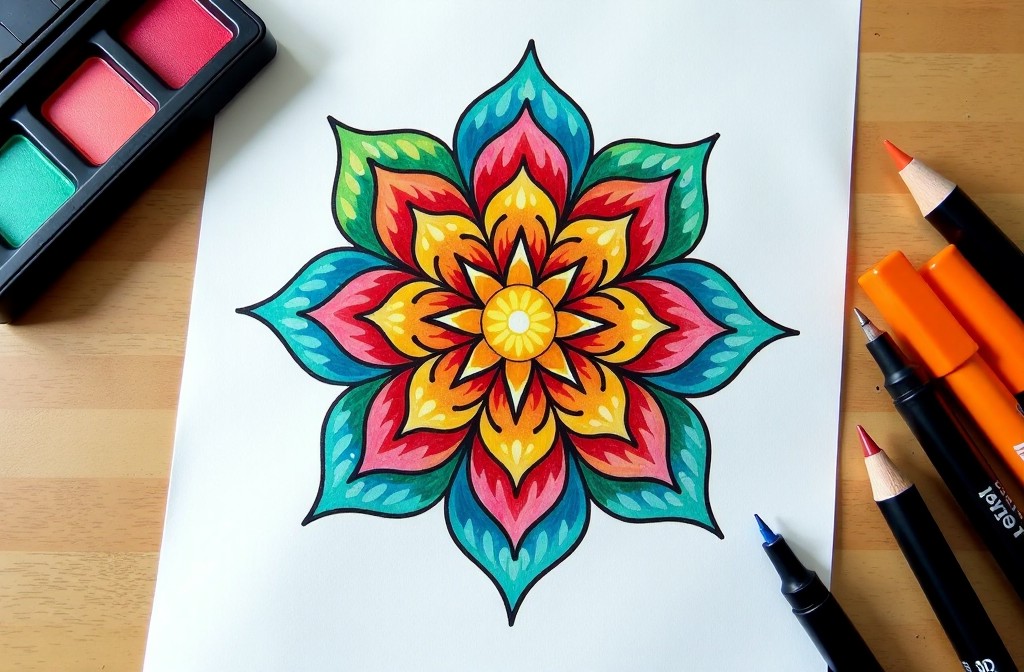
What You’ll Discover in This Guide (Article Overview)
This comprehensive guide is your passport to the vibrant world of art colouring sheets . We’ll journey through the fascinating cognitive and therapeutic benefits that coloring offers, exploring how this simple activity can sharpen your mind and soothe your soul. We will delve into the diverse spectrum of styles available, from the meditative symmetry of mandalas to the challenge of coloring famous artworks. We’ll discuss how art coloring pages cater to different age groups, providing developmental benefits for children and engaging relaxation for adults and seniors. Furthermore, we’ll equip you with knowledge about the best tools and techniques to elevate your coloring experience, turning simple pages into personal masterpieces. We’ll guide you on where to find high-quality resources, including standout online platforms, and suggest creative ways to use your finished artwork. Finally, we’ll peek into the future, exploring emerging trends in this ever-evolving creative space. Prepare to unlock your creativity and discover why art coloring sheets are much more than just a pastime – they are a pathway to mindfulness, skill development, and pure artistic joy.
The Cognitive Canvas: Brain Benefits of Engaging with Art Coloring Page
While often perceived as a simple leisure activity, engaging with arts colouring sheets offers a surprising workout for the brain. The act of selecting colors, applying them within boundaries, and focusing on intricate details stimulates various cognitive functions. It’s a delightful paradox: an activity renowned for relaxation simultaneously sharpens mental acuity. Let’s explore the specific cognitive benefits that coloring provides.
Enhancing Focus and Concentration
In an era of constant digital notifications and dwindling attention spans, activities that promote sustained focus are invaluable. Coloring requires concentration. You need to pay attention to the lines, choose appropriate colors, and carefully apply them to specific areas, especially in complex designs. This process naturally draws your focus inward, quieting mental chatter and distractions. Regularly engaging in coloring can train your brain to concentrate for longer periods, much like exercising a muscle. This improved focus can translate to other areas of life, enhancing productivity at work or school and improving your ability to engage deeply with tasks. The structured nature of coloring provides a clear objective, making it easier to stay engaged compared to more open-ended creative pursuits that might feel overwhelming.
Stimulating Creativity and Imagination
Although the outlines are pre-drawn, art coloring pages are powerful catalysts for creativity. The primary creative act lies in the selection and application of color. Which hues will you choose? Will you opt for realistic tones, or unleash a riot of unexpected combinations? How will you blend shades to create depth and dimension? These decisions actively engage the creative centers of your brain. Coloring encourages experimentation with color palettes, harmonies, and contrasts. It allows you to visualize different outcomes and bring your unique interpretation to the design. Even when coloring replicas of famous artworks, the choice of medium and technique allows for personal expression. This process can unlock latent creativity, reminding individuals that artistic expression isn’t limited to drawing or painting from scratch. It builds confidence in one’s aesthetic judgment and imaginative capabilities.
Improving Fine Motor Skills and Hand-Eye Coordination
The precise movements required for coloring – gripping a pencil or marker, controlling pressure, and staying within the lines – are excellent exercises for fine motor skills. This is particularly beneficial for young children developing these abilities and for older adults seeking to maintain dexterity. The constant communication between what your eyes see (the lines, the spaces) and what your hands do (applying the color) significantly enhances hand-eye coordination. Complex art coloring page with tiny details demand even greater precision, further refining these skills. This improvement in motor control can have practical benefits in everyday life, from handwriting and typing to playing musical instruments or engaging in crafts.
Problem-Solving Through Color Choices
Believe it or not, coloring involves subtle problem-solving. How do you make a certain element stand out? Which colors will create the desired mood or effect? How do you handle overlapping areas or intricate patterns? Choosing a color palette that is harmonious and effectively conveys the intended feeling requires consideration and planning. Deciding where to start, how to progress through the page, and how to blend or layer colors are all micro-decisions that engage problem-solving pathways in the brain. This process encourages flexible thinking and adaptability as you respond to the evolving appearance of the page. It’s a low-stakes environment to practice decision-making and visual problem-solving, building cognitive flexibility along the way.
Therapeutic Hues: The Mental and Emotional Well-being Aspects
Beyond the cognitive boost, art coloring pages offer profound benefits for mental and emotional health. The rhythmic, repetitive nature of coloring, combined with the focus it demands, creates a powerful therapeutic effect. It’s an accessible tool for managing stress, processing emotions, and fostering a sense of calm and accomplishment in individuals of all ages.
Stress Reduction and Mindfulness Practice
One of the most celebrated benefits of coloring is its ability to reduce stress and anxiety. When you immerse yourself in coloring, your focus shifts away from worries and ruminating thoughts towards the simple act of choosing colors and filling shapes. This focused attention helps to calm the amygdala, the brain’s fear center, inducing a state of relaxation similar to meditation. The repetitive motions of coloring can be soothing, lowering heart rate and blood pressure. It encourages mindfulness – being fully present in the moment – as you pay close attention to the colors, textures, and the physical sensation of the coloring tool on paper.
Coloring as a Form of Active Meditation
Unlike passive relaxation methods, coloring is a form of active meditation. It keeps your hands busy and your mind engaged just enough to prevent it from wandering into stressful territory, but not so much that it becomes taxing. This gentle engagement helps anchor you in the present moment. You observe the colors flowing onto the page, notice the details of the design, and become aware of your breathing, all without the pressure of trying to “empty” your mind completely. This makes coloring an excellent entry point into mindfulness for those who find traditional meditation challenging. It provides a tangible focus point, making the meditative state more accessible and sustainable.
Emotional Expression and Release
While you’re not creating the lines yourself, the colors you choose and the way you apply them can be a powerful form of non-verbal emotional expression. Feeling vibrant and energetic? You might reach for bright, bold colors. Feeling calm or introspective? Perhaps softer pastels or cool blues and greens appeal more. Coloring can provide a safe outlet for emotions that are difficult to articulate. The process itself can be cathartic, allowing you to channel feelings onto the page. There’s no right or wrong way to color, which removes the pressure of judgment and allows for authentic self-expression through the medium of color choice and application style (e.g., heavy pressure vs. light strokes).
Art Therapy Applications: Coloring for Healing
Art therapists have long recognized the value of coloring in therapeutic settings. While coloring alone isn’t a substitute for professional therapy, it’s often used as a complementary tool. It can help patients relax, open up communication, and explore feelings in a non-threatening way. Coloring specific types of images, like mandalas, is often used to promote centering and self-reflection. For individuals dealing with trauma, anxiety disorders, depression, or chronic illness, coloring can provide a sense of control, a temporary escape, and a way to manage overwhelming emotions. It’s a structured activity that can help ground individuals experiencing distress. [Link to related post on Art Therapy Techniques]
Boosting Self-Esteem Through Artistic Accomplishment
Completing an art coloring page, especially a complex one, provides a tangible sense of accomplishment. Seeing the transformation from a black-and-white outline to a fully colored, vibrant image can significantly boost self-esteem and confidence. It validates one’s ability to create something beautiful and complete a task requiring patience and focus. This feeling of achievement is important for mental well-being, reinforcing a positive self-image. Sharing finished pages with others or displaying them can further enhance this sense of pride and validation. It proves that creativity is accessible and that everyone can produce aesthetically pleasing results.
A Spectrum of Styles: Exploring Different Types of Art Coloring Page
The world of arts colouring sheets is incredibly diverse, offering styles and themes to suit every taste, mood, and skill level. This variety is key to its broad appeal, ensuring that whether you seek meditative patterns, realistic scenes, or fantastical escapes, there’s a coloring page waiting for you. Let’s explore some of the most popular categories.
Mandalas: Symmetry, Spirituality, and Serenity
Mandalas are perhaps one of the most iconic forms of art coloring page, especially for adults. These intricate, circular designs, often featuring repeating geometric patterns radiating from a central point, have roots in spiritual traditions like Hinduism and Buddhism, where they represent the universe and aid in meditation. Coloring mandalas is inherently calming due to their symmetry and repetitive nature. The focus required to fill the often tiny sections promotes mindfulness and concentration, drawing the colorist into a state of flow. The circular form itself can feel containing and centering. Coloring mandalas offers a structured yet creative way to de-stress and find inner balance.
Abstract Designs: Freedom in Form and Color
Abstract art coloring pages move away from recognizable objects and focus purely on lines, shapes, forms, and patterns. These designs offer immense freedom for color exploration. Without the constraints of representing reality, you can let your intuition guide your color choices, experimenting with bold contrasts, subtle gradients, or unexpected combinations. Abstract pages can range from flowing, organic shapes to sharp, geometric compositions. They are excellent for practicing color theory, blending techniques, and simply enjoying the interplay of hues without worrying about making something look “realistic.” They invite interpretation and personal expression in its purest form.
Nature and Botanicals: Connecting with the Outdoors
Pages featuring flowers, leaves, animals, landscapes, and seascapes are perennial favorites. Coloring botanical illustrations, intricate forest scenes, or detailed animal portraits allows you to connect with the beauty of the natural world. These pages often provide an opportunity to practice realistic coloring, attempting to capture the true colors and textures of plants and animals. Alternatively, they can be approached with complete imaginative freedom, creating fantastical, multi-colored flora and fauna. Coloring nature themes can be particularly grounding and refreshing, offering a mental escape to the outdoors, even when you’re stuck inside.
Famous Art Masterpieces: Coloring the Classics
For art lovers, coloring pages based on famous paintings offer a unique way to engage with art history. Imagine adding your own hues to Van Gogh’s “Starry Night,” Klimt’s “The Kiss,” or Hokusai’s “The Great Wave.” These pages allow you to study the composition, lines, and forms of masterpieces up close. While you can try to replicate the original colors, you can also reinterpret these iconic works with your own palette, leading to a deeper appreciation and understanding of the original artist’s choices. It’s an educational and creative experience rolled into one, demystifying great art and making it personally accessible. [Link to related post on Art History Coloring]
Geometric Patterns: Precision and Play
Similar to mandalas but often extending across the entire page in tessellations or complex grids, geometric pattern pages appeal to those who enjoy structure and precision. Coloring these designs requires careful attention to detail and can be incredibly satisfying as the pattern emerges through color. They offer opportunities to explore color relationships, create optical effects, and play with symmetry and repetition. Despite their structured nature, the color choices allow for significant creativity, transforming a simple grid into a vibrant mosaic or a complex optical illusion.
Fantasy and Sci-Fi Themes: Escaping Reality
Art coloring pages featuring dragons, fairies, unicorns, castles, futuristic cities, and alien landscapes provide a portal to other worlds. These themes ignite the imagination and allow for complete creative freedom with color. Want a purple dragon or a neon-green castle? Go for it! Fantasy and sci-fi pages are perfect for escapism, allowing you to immerse yourself in imaginative realms while engaging in a relaxing activity. They often feature intricate details and dynamic scenes, offering a rewarding challenge for colorists.
Cultural and Historical Motifs
Explore the world and its history through coloring pages featuring cultural patterns, historical costumes, architectural landmarks, and traditional motifs from different civilizations. Think Celtic knots, Egyptian hieroglyphs, Art Nouveau patterns, or traditional textile designs. These pages can be both aesthetically pleasing and educational, offering insights into different cultures and historical periods while providing a unique coloring experience. They allow you to appreciate the diversity of human artistic expression through interactive engagement.
Art Coloring Page for Every Age: Tailoring the Experience
One of the beautiful aspects of arts colouring sheets is their universal appeal, transcending age barriers. However, the type of page and the approach to coloring can be tailored to suit different developmental stages, abilities, and interests, ensuring the experience is both enjoyable and beneficial for everyone from toddlers to seniors.
For Kids: Fostering Early Artistic Development
For young children, coloring is a fundamental activity that supports crucial developmental milestones. While simpler outlines are often the starting point, introducing age-appropriate “art” coloring pages can further nurture their growth.
- Simple Shapes vs. Complex Scenes: Toddlers and preschoolers benefit most from pages with large, simple shapes and thick outlines, which helps them practice staying within the lines and develop basic color recognition. As they grow, introducing pages with more detailed scenes – simple landscapes, animals in habitats, storybook illustrations – encourages narrative thinking and finer motor control. Art coloring page designed for kids might feature simplified versions of famous art styles or patterns, introducing aesthetic concepts early on.
- Educational Themes (Alphabet, Numbers, Science): Coloring pages can be fantastic learning tools. Pages featuring letters, numbers, shapes, animals, plants, or simple science concepts (like the water cycle) make learning interactive and fun. Associating colors with specific concepts can aid memory retention. Using art coloring pages with these themes adds an extra layer of engagement beyond basic worksheets.
For Teenagers: A Creative Outlet for Self-Expression
Teenagers often navigate complex emotions and seek avenues for self-expression. Art coloring offer a low-pressure creative outlet that can be both relaxing and empowering. Intricate designs like mandalas, abstract patterns, fantasy themes, or even pages featuring pop culture icons or edgy graphic styles can appeal to their evolving tastes. Coloring provides a way to de-stress from academic pressure and social challenges. It allows them to assert their individuality through color choices and techniques, creating something uniquely theirs without the perceived risk of failure associated with drawing from scratch. It can be a solitary, mindful activity or a social one shared with friends.
For Adults: Sophisticated Designs for Relaxation and Skill-Building
As discussed extensively, adults have embraced art coloring pages primarily for stress relief and mindfulness. The market caters heavily to this demographic with an enormous variety of sophisticated designs – highly detailed mandalas, complex patterns, realistic portraits, grayscale images (where shading guides the colorist), and intricate nature scenes. For adults, coloring can be a way to reconnect with creativity, learn new artistic techniques like blending and shading, and achieve a state of flow. It’s a hobby that requires minimal investment but offers significant returns in terms of relaxation, mental clarity, and the satisfaction of creating beautiful artwork.
For Seniors: Maintaining Cognitive Function and Dexterity
Coloring is an excellent activity for seniors, offering multiple benefits for healthy aging. Engaging with art coloring pages helps maintain cognitive function by stimulating focus, concentration, and problem-solving skills. The act of choosing colors and planning the layout keeps the mind active. Furthermore, the physical act of coloring helps preserve fine motor skills and hand-eye coordination, which can decline with age. It’s a gentle, enjoyable activity that can combat boredom and social isolation, especially if done in a group setting. Pages with larger print or slightly less intricate designs might be preferable for those with visual impairments or reduced dexterity, but many seniors enjoy the challenge of complex patterns as well. The sense of accomplishment from completing a page can significantly boost mood and self-worth.
Tools of the Trade: Choosing Your Coloring Mediums
The magic of art coloring pages truly comes alive when paired with the right tools. While a simple set of crayons can certainly do the job, exploring different coloring mediums can dramatically enhance your experience, allowing for greater control, vibrancy, and artistic expression. The choice of tool can influence the final look and feel of your artwork, from soft and subtle to bold and brilliant.
Colored Pencils: Precision and Blending
Colored pencils are a favorite for many art coloring enthusiasts, and for good reason. They offer excellent precision, making them ideal for intricate details and sharp lines. Available in a vast range of colors, they can be layered to create new shades and blended to achieve smooth transitions and gradients.
- Wax-Based vs. Oil-Based: Wax-based pencils (like Prismacolor Premier) are generally softer, blend easily, and lay down rich color, but can be prone to wax bloom (a cloudy film). Oil-based pencils (like Faber-Castell Polychromos) are typically harder, hold a point longer for fine details, are less prone to bloom, and blend well with solvents, though perhaps less creamy than wax-based.
- Techniques: Layering (applying light layers of different colors), burnishing (using heavy pressure or a colorless blender pencil to combine layers smoothly), and using solvents (like odorless mineral spirits) can create painterly effects.
Markers: Bold Colors and Coverage
Markers provide vibrant, saturated color and excellent coverage, quickly filling larger areas. They come in various tip sizes (fine point for details, brush tip for variable lines and blending, chisel tip for broad strokes).
- Alcohol vs. Water-Based Markers: Alcohol-based markers (like Copic or Ohuhu) blend seamlessly, offering smooth, streak-free coverage and professional results, but they are more expensive and will bleed through most paper types, requiring thick paper or a protective sheet underneath. Water-based markers (like Crayola or Tombow Dual Brush Pens) are more affordable, generally odorless, and less prone to bleeding (though heavy application can still cause issues), but blending can be trickier and may pill the paper if overworked.
- Considerations: Always test markers on a scrap piece of the coloring page paper to check for bleeding.
Gel Pens: Sparkle and Detail
Gel pens are fantastic for adding highlights, accents, and fine details to your coloring pages. They come in a dazzling array of colors, including metallics, glitters, neons, and pastels. The opaque ink sits on top of the paper (and can even write over other mediums like colored pencil or marker), making them perfect for adding bright pops of color, intricate patterns, or shimmering effects. While not ideal for coloring large areas due to ink flow and cost, they are invaluable for embellishments.
Watercolors and Paints: Advanced Techniques
For those looking to push their coloring skills further, watercolors or even thin acrylic paints can be used on art coloring pages, provided the paper is thick enough (watercolor paper or heavy cardstock is best). Watercolors offer beautiful transparency and blending capabilities, creating soft, luminous effects. Gouache (opaque watercolor) provides flat, vibrant color. Using paints requires more control and understanding of water-to-pigment ratios but can yield stunning, unique results, transforming the coloring page into a mixed-media artwork. [Link to related post on Watercolor Techniques for Coloring Pages]
Digital Coloring: Apps and Software
The world of coloring has also gone digital. Numerous apps (like Pigment, Procreate with imported pages, Lake Coloring) and software programs allow you to color art pages on tablets or computers using a stylus or even your finger. Digital coloring offers advantages like an undo button, infinite color palettes, various brushes and textures, and the ability to zoom in for minute details without needing physical supplies. While the tactile experience differs, it’s a convenient and mess-free way to enjoy coloring complex designs.
Paper Quality Matters: Preventing Bleed-Through
Regardless of your chosen medium (especially markers and paints), the quality of the paper your art coloring page is printed on is crucial. Thin, standard copy paper will likely lead to frustration with bleeding, feathering (ink spreading), and buckling (with wet media). Look for coloring books printed on thicker, smoother paper (often described as artist-grade or heavyweight). If printing pages yourself, opt for heavy cardstock (at least 65lb/176gsm, preferably higher for wet media) or specialty marker/watercolor paper for the best results. Good paper allows mediums to perform optimally, enabling better blending and preventing damage to the page or the surface underneath.
Mastering the Art: Techniques to Elevate Your Coloring
Moving beyond simply filling spaces with flat color can transform your art coloring page into truly captivating pieces. Learning basic techniques for blending, shading, and understanding color relationships will add depth, dimension, and a professional touch to your work. Don’t be intimidated; these techniques are accessible and incredibly rewarding to practice.
Understanding Color Theory Basics
A little knowledge of color theory goes a long way in making your coloring pages pop. It helps you choose colors that work well together and create specific moods or effects.
- The Color Wheel: Familiarize yourself with a basic color wheel.
- Primary Colors: Red, Yellow, Blue (cannot be made by mixing other colors).
- Secondary Colors: Green, Orange, Violet (made by mixing two primary colors).
- Tertiary Colors: Made by mixing a primary and a secondary color (e.g., blue-green, red-orange).
- Color Harmonies: These are combinations of colors that are pleasing to the eye.
- Complementary Colors: Opposite each other on the wheel (e.g., red/green, blue/orange). Using them side-by-side creates high contrast and makes colors appear brighter.
- Analogous Colors: Next to each other on the wheel (e.g., blue, blue-green, green). They create a harmonious, serene feel.
- Triadic Colors: Evenly spaced around the wheel (e.g., red, yellow, blue). They offer vibrant, balanced palettes.
- Warm vs. Cool Colors: Warm colors (reds, oranges, yellows) tend to advance and feel energetic. Cool colors (blues, greens, violets) tend to recede and feel calming. Using this knowledge helps create depth.
Blending and Shading Techniques
Adding shading and blending is key to making your colored images look three-dimensional rather than flat.
- Blending (Colored Pencils):
- Layering: Apply light layers of different colors over each other. The underlying colors will show through, creating a mixed hue.
- Burnishing: After layering, use a light-colored pencil (like white or cream) or a colorless blender pencil with heavy pressure to smooth the layers together, creating a seamless gradient and a waxy finish.
- Solvents: Apply a small amount of odorless mineral spirits or rubbing alcohol with a cotton swab or blending stump (tortillon) to dissolve and blend the pencil layers for a painterly effect (use in a well-ventilated area and test first).
- Blending (Markers):
- Alcohol Markers: Blend colors while the ink is still wet. Use a lighter color to push a darker color, or use a colorless blender marker to fade edges or fix mistakes. Work quickly for smooth transitions.
- Water-Based Markers: Blend by applying colors next to each other and then using a water brush, a damp paintbrush, or a blender marker specifically designed for water-based inks to merge the colors. Be careful not to oversaturate the paper.
- Shading: Determine a light source (even an imaginary one). Add darker shades of your chosen color (or complementary colors used subtly) to areas that would be in shadow. Add highlights (leaving areas white, using a white pencil/pen, or a lighter tint) to areas where the light would hit directly. This creates form and volume.
Creating Texture and Depth
Go beyond smooth blends to add visual interest.
- Texture Techniques: Use different strokes with your pencils or markers – small circles (circling), cross-hatching (layers of parallel lines at angles), stippling (dots) – to suggest textures like fur, wood grain, or rough surfaces. You can also gently impress patterns onto the paper before coloring (e.g., using a textured surface underneath) and then color over it.
- Creating Depth: Use warm colors for foreground elements and cool colors for background elements to enhance perspective. Make objects in the distance smaller, less detailed, and lighter or bluer in color (atmospheric perspective). Overlapping objects also creates a sense of depth.
Using White Space Effectively
Don’t feel obligated to color every single millimeter of the page. Leaving some areas white (the paper itself) can act as a highlight, create contrast, and give the viewer’s eye a place to rest. Strategic use of white space can make your colored areas appear more vibrant and prevent the image from looking too busy. Consider leaving highlights on reflective surfaces or using white space as part of the design itself.
Experimenting with Mixed Media
Combine different coloring tools on the same page for unique effects. Start with a base layer of marker, then add details and shading with colored pencils on top. Use gel pens for bright highlights or metallic accents over pencil or marker. Add watercolor washes for backgrounds. Combining media adds complexity and visual interest, allowing you to leverage the strengths of each tool. [Link to related post on Mixed Media Coloring Projects]
Finding Your Perfect Pages: Resources and Communities
With your tools chosen and techniques in mind, the next step is finding those captivating art coloring pages to bring to life. Luckily, we live in an age where access to incredible designs is easier than ever, from vast online repositories to curated books and supportive communities. Knowing where to look ensures a steady supply of inspiration.
Online Treasures: Websites and Digital Downloads
The internet is a goldmine for art coloring pages. Numerous websites offer vast libraries of designs, often available for instant download and printing. This allows you to choose individual pages that appeal to you rather than committing to an entire book. You can find pages in every conceivable style and theme, from independent artists’ unique creations to pages based on popular trends. Many sites offer free samples, while others operate on a subscription model or sell individual pages or bundles. The convenience of printing at home means you can choose your preferred paper type and print multiple copies if you want to experiment.
Exploring Vast Collections: Why artcoloringpage.com is a Go-To Resource
When searching for high-quality, diverse, and easily accessible art coloring pages online, artcoloringpage.com stands out as an excellent resource. They offer a wide selection catering to various tastes and skill levels, encompassing many of the styles we’ve discussed, such as intricate mandalas, beautiful nature scenes, abstract patterns, and potentially even designs suitable for different age groups. Platforms like this often curate their collections, ensuring a certain standard of design quality. Having a reliable source like artcoloringpage.com saves you time searching across multiple platforms and provides a steady stream of fresh inspiration for your coloring journey. Whether you’re a beginner looking for simpler art designs or an experienced colorist seeking complex challenges, curated online galleries are invaluable.
Printable vs. Bound Coloring Books
Both printable pages and traditional coloring books have their pros and cons.
- Printable Pages:
- Pros: Huge variety, choose individual designs, print on your preferred paper, print multiple copies, often find free options.
- Cons: Requires a printer and ink, need to manage loose pages, quality depends on your printer and paper choice.
- Bound Coloring Books:
- Pros: Convenient and portable, curated themes, often higher quality paper than standard copy paper, no printing required, satisfying to complete a whole book.
- Cons: Committed to all designs in the book, paper type is fixed (may not suit all mediums), can be more expensive per page than some printables, spine can sometimes get in the way.
Many colorists enjoy using both formats depending on their needs and preferences.
Joining Coloring Communities Online and Offline
Coloring doesn’t have to be a solitary activity. Connecting with fellow enthusiasts can enhance the experience, provide inspiration, and offer a space to share your work.
- Online: Facebook groups, Instagram hashtags (#artcoloringpages, #adultcoloring), Pinterest boards, and dedicated forums are filled with people sharing their finished pages, discussing techniques, reviewing tools, and offering encouragement. It’s a great way to discover new artists and styles.
- Offline: Look for local coloring clubs or meetups in libraries, community centers, or craft stores. Coloring together can be a relaxing social activity, allowing you to chat, share tips, and admire each other’s work in person.
Supporting Independent Artists
Many talented artists create and sell their own unique art coloring pages directly through platforms like Etsy, Patreon, or their personal websites. Buying from independent artists is a fantastic way to get truly original designs that you won’t find in mass-market books. It also directly supports creators, allowing them to continue producing beautiful artwork for the coloring community. These artists often have distinct styles, offering niche themes or highly detailed illustrations that cater to specific interests.
Beyond the Page: What to Do with Your Finished Artwork
You’ve spent hours carefully choosing colors, blending, shading, and bringing an art coloring page to life. Now what? Don’t just stash your beautiful creations away in a folder or leave them hidden in the book! Your finished pages are testaments to your creativity and patience, and there are many wonderful ways to display, share, or repurpose them.
Framing and Displaying Your Creations
Treat your best coloring work like any other piece of art! Select your favorite finished pages and give them the presentation they deserve.
- Simple Frames: Inexpensive frames from craft stores or discount shops can make your coloring pages look polished and ready to hang. Choose a frame color and style that complements the artwork.
- Matting: Adding a mat (a cardboard border inside the frame) can elevate the look significantly, providing visual space around the image and making it appear more professional. You can buy pre-cut mats or have them custom-cut.
- Gallery Wall: Create a dynamic display by framing several of your colored pages and arranging them together on a wall. Mix and match sizes and frame styles for an eclectic look.
- Other Displays: Clipboards, magnetic poster hangers, or even just washi tape can be used for a more casual display that’s easy to change out.
Gifting Your Colored Pages
A hand-colored art page makes a thoughtful and personal gift. Choose a design that you know the recipient will love – perhaps their favorite animal, flower, or a calming mandala. Frame it nicely, and you have a unique, handmade present that shows you invested time and care. It’s a wonderful alternative to store-bought gifts for birthdays, holidays, or just as a thinking-of-you gesture.
Creating Crafts: Cards, Bookmarks, Decorations
Your colored pages are perfect raw material for various craft projects.
- Greeting Cards: Cut out the entire colored page or specific elements from it and mount them onto blank cardstock to create one-of-a-kind greeting cards for any occasion.
- Bookmarks: Cut finished pages into strips, perhaps laminating them or backing them with cardstock for durability, to make beautiful bookmarks for yourself or fellow readers. Intricate patterns or long, narrow designs work particularly well.
- Gift Tags: Use smaller colored sections or cut specific motifs to create unique gift tags.
- Decoupage: Cut up colored pages and use decoupage medium (like Mod Podge) to decorate boxes, trays, furniture, or other objects.
- Journaling/Scrapbooking: Incorporate colored elements into your art journal, bullet journal, or scrapbook layouts for added visual interest and personalization.
- Ornaments/Decorations: Cut out shapes, back them with cardstock, add a ribbon, and create unique decorations for holidays or parties.
Digital Archiving and Sharing
Preserve your work digitally and share it with a wider audience if you wish.
- Scanning/Photographing: Scan your finished pages or take high-quality photos in good lighting. This creates a digital backup and allows for easy sharing.
- Online Sharing: Post your digital images to social media (Instagram, Pinterest, Facebook coloring groups) to connect with other colorists, get feedback, and inspire others. Use relevant hashtags to increase visibility.
- Personal Portfolio: Keep a digital folder or use a portfolio app to track your progress and create a personal gallery of your completed works. Seeing your improvement over time can be very motivating.
The Future is Colorful: Trends in Art Coloring Page
The world of arts colouring sheets is not static; it continues to evolve with technology, changing tastes, and new creative ideas. Staying aware of emerging trends can open up exciting new possibilities for your coloring hobby and provide fresh sources of inspiration. Here’s a glimpse into what the future might hold.
Rise of AI-Generated Coloring Designs
Artificial intelligence is increasingly capable of generating unique and complex imagery. We are already seeing AI tools that can create custom coloring pages based on text prompts (e.g., “a mandala with cat motifs in an art deco style”). This trend is likely to grow, offering unprecedented personalization and an almost infinite supply of novel designs. While debates about AI art continue, it presents a fascinating new avenue for generating coloring content tailored precisely to individual preferences or specific themes, potentially creating intricate patterns and scenes beyond human conception.
Interactive and Augmented Reality Coloring
Technology is bridging the gap between physical coloring and digital experiences. Augmented Reality (AR) coloring apps allow users to color a physical page and then use their smartphone or tablet to see the colored character or scene come to life in 3D, often with animations and interactive elements. This blend of tactile coloring with digital magic is particularly engaging for children but holds potential for adult applications too, perhaps visualizing color schemes in 3D space before committing them to paper or adding layers of digital information to a physically colored page.
Niche Themes and Personalization
As the market matures, expect to see a greater proliferation of highly specific and niche coloring themes catering to specialized interests. Beyond broad categories like “nature” or “fantasy,” we might see more books focused on specific architectural styles, historical periods, scientific diagrams, specific animal breeds, intricate mechanical designs, or hyper-realistic portraits. Personalization services might also become more common, allowing users to order custom coloring books featuring their own photos, names, or specific requested themes, moving beyond AI generation to human-curated personalization.
Subscription Boxes and Curated Experiences
Subscription boxes offering a curated selection of coloring supplies, exclusive coloring pages (often from independent artists), and related goodies (like tea, snacks, or mindfulness prompts) provide a complete themed experience delivered regularly. This trend caters to the desire for discovery and convenience, offering colorists a surprise package each month centered around their hobby. These boxes often foster a sense of community among subscribers and provide exposure to new tools and artists. The curation aspect adds value beyond simply buying supplies or books individually. [Link to related post on Coloring Subscription Boxes]
Conclusion: Embrace Your Inner Artist with Art Coloring Page
Our journey through the vibrant world of art coloring picture has revealed that this seemingly simple activity is rich with benefits, possibilities, and creative potential. It’s far more than just a way to pass the time; it’s a powerful tool for enhancing well-being, stimulating the mind, and unlocking artistic expression in individuals of all ages and skill levels.
Recapping the Journey: Benefits and Possibilities
We’ve explored how engaging with art coloring page can sharpen focus, boost creativity, and improve fine motor skills. We’ve delved into the profound therapeutic effects, highlighting coloring’s ability to reduce stress, facilitate mindfulness, and provide an outlet for emotional expression. We’ve marveled at the sheer diversity of styles available – from meditative mandalas and abstract explorations to nature scenes and famous masterpieces – ensuring there’s a perfect page for every mood and interest. We’ve also equipped you with knowledge about essential tools and techniques, empowering you to elevate your coloring from simple fill-ins to nuanced works of art. Furthermore, we’ve guided you towards valuable resources, like the extensive collections found on sites such as artcoloringpage.com, and inspired you with creative ways to use your finished masterpieces.
Final Encouragement: Start Coloring Today!
Whether you’re a seasoned colorist or someone who hasn’t picked up a crayon since childhood, there has never been a better time to embrace this rewarding hobby. The barriers to entry are low, but the potential rewards for your mental, emotional, and creative well-being are immense. Don’t worry about perfection or comparing yourself to others. The true value lies in the process – the mindful focus, the creative choices, the simple joy of bringing color to a page.
A Call to Explore and Create
So, pick up those pencils, markers, or pens. Find a design that speaks to you – perhaps start by exploring the diverse offerings online. Allow yourself to get lost in the lines and colors. Experiment, play, and discover the unique satisfaction that comes from creating something beautiful with your own hands. Let art coloring page be your gateway to relaxation, mindfulness, and the rediscovery of your own innate creativity. The canvas awaits – go ahead and make your mark.
